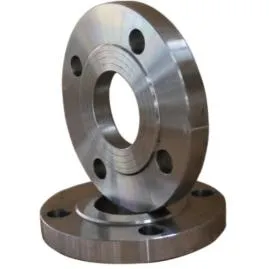-
Cangzhou Yulong Steel Co., Ltd.
-
Phone:
+86 13303177267 -
Email:
admin@ylsteelfittings.com
- English
- Arabic
- Italian
- Spanish
- Portuguese
- German
- kazakh
- Persian
- Greek
- French
- Russian
- Polish
- Thai
- Indonesian
- Vietnamese
- Zulu
- Korean
- Uzbek
- Hindi
- Serbian
- Malay
- Ukrainian
- Gujarati
- Haitian Creole
- hausa
- hawaiian
- Hebrew
- Miao
- Hungarian
- Icelandic
- igbo
- irish
- Japanese
- Javanese
- Kannada
- Khmer
- Rwandese
- Afrikaans
- Albanian
- Amharic
- Armenian
- Azerbaijani
- Basque
- Belarusian
- Bengali
- Bosnian
- Bulgarian
- Catalan
- Cebuano
- China
- China (Taiwan)
- Corsican
- Croatian
- Czech
- Danish
- Esperanto
- Estonian
- Finnish
- Frisian
- Galician
- Georgian
- Kurdish
- Kyrgyz
- Lao
- Latin
- Latvian
- Lithuanian
- Luxembourgish
- Macedonian
- Malgashi
- Malayalam
- Maltese
- Maori
- Marathi
- Mongolian
- Myanmar
- Nepali
- Norwegian
- Norwegian
- Occitan
- Pashto
- Dutch
- Punjabi
- Romanian
- Samoan
- Scottish Gaelic
- Sesotho
- Shona
- Sindhi
- Sinhala
- Slovak
- Slovenian
- Somali
- Sundanese
- Swahili
- Swedish
- Tagalog
- Tajik
- Tamil
- Tatar
- Telugu
- Turkish
- Turkmen
- Urdu
- Uighur
- Welsh
- Bantu
- Yiddish
- Yoruba

Dec . 24, 2024 15:02 Back to list
rolled and welded pipe
Rolled and Welded Pipe An Overview
In modern construction and manufacturing, pipes play an indispensable role in various applications ranging from water supply and drainage to oil and gas transportation. Among the myriad of pipe manufacturing techniques, rolled and welded pipe stands out for its efficiency, versatility, and economic benefits. This article delves into what rolled and welded pipes are, how they are produced, their applications, and the advantages they offer over other types of piping methods.
Understanding Rolled and Welded Pipe
Rolled and welded pipe, as the name suggests, is created by rolling flat sheets of metal into cylindrical shapes and then welding the edges together. This manufacturing process contrasts with seamless pipes, which are made from a solid round billet that is heated and molded into a pipe shape without any joints. The rolled and welded pipe is commonly available in various diameters and wall thicknesses, offering designers and engineers flexibility in their projects.
The Manufacturing Process
The process begins with selecting the appropriate flat sheet material, typically steel or stainless steel, which possesses the necessary mechanical and chemical properties for the intended application. The sheets are then passed through a series of rollers that gradually shape them into a cylindrical form.
Once the desired shape is achieved, the edges of the rolled material are aligned and welded together using techniques such as Electric Resistance Welding (ERW) or Submerged Arc Welding (SAW). These welding methods ensure strong, durable joints, making the pipes suitable for high-pressure and corrosive environments.
After welding, the pipes undergo various finishing processes, including stress-relieving heat treatment, inspection, and surface treatment to enhance corrosion resistance and durability. This comprehensive manufacturing process allows for high-quality rolled and welded pipes that meet strict industry standards.
Applications
Rolled and welded pipes find extensive applications across various sectors. They are primarily used in
1. Construction and Infrastructure For structural applications in buildings, bridges, and tunnels where strength and stability are paramount. 2. Oil and Gas Transporting crude oil, natural gas, and petroleum products, owing to their robustness against high pressures.
rolled and welded pipe

3. Water and Sewage For pipelines that carry drinking water, sewage, and industrial wastewater, rolled and welded pipes offer resistance to corrosion and leakage.
Advantages of Rolled and Welded Pipes
Rolled and welded pipes offer several key advantages, making them a preferred choice in many applications
1. Cost-Effectiveness The manufacturing process is generally more economical compared to producing seamless pipes, especially for larger diameters.
2. Versatility Available in different sizes and thicknesses allows for adaptability in various construction and industrial applications.
3. Strength and Durability The welding process provides high integrity and strength, making these pipes suitable for high-stress environments.
4. Customization The ability to create custom lengths and diameters according to specific needs is a significant advantage in tailored applications.
5. Ease of Handling Lighter than their seamless counterparts at larger sizes, rolled and welded pipes are easier to transport and install.
Conclusion
Rolled and welded pipes represent a vital segment of the piping industry, with broad applications and significant benefits. Their production process combines contemporary engineering principles with traditional manufacturing techniques, resulting in products that are reliable and versatile. As industries continue to evolve and demand robust piping solutions, the importance of rolled and welded pipes remains firmly established, contributing to the infrastructure and resource management essential for modern society. Through continual improvements in manufacturing technology and materials science, the future of rolled and welded pipes looks promising, paving the way for even more innovative applications and efficiencies.
Latest news
-
ANSI 150P SS304 SO FLANGE
NewsFeb.14,2025
-
ASTM A333GR6 STEEL PIPE
NewsJan.20,2025
-
ANSI B16.5 WELDING NECK FLANGE
NewsJan.15,2026
-
ANSI B16.5 SLIP-ON FLANGE
NewsApr.19,2024
-
SABS 1123 FLANGE
NewsJan.15,2025
-
DIN86044 PLATE FLANGE
NewsApr.19,2024
-
DIN2527 BLIND FLANGE
NewsApr.12,2024
-
JIS B2311 Butt-Welding Fittings LR/SR 45°/90° /180°Seamless/Weld
NewsApr.23,2024











